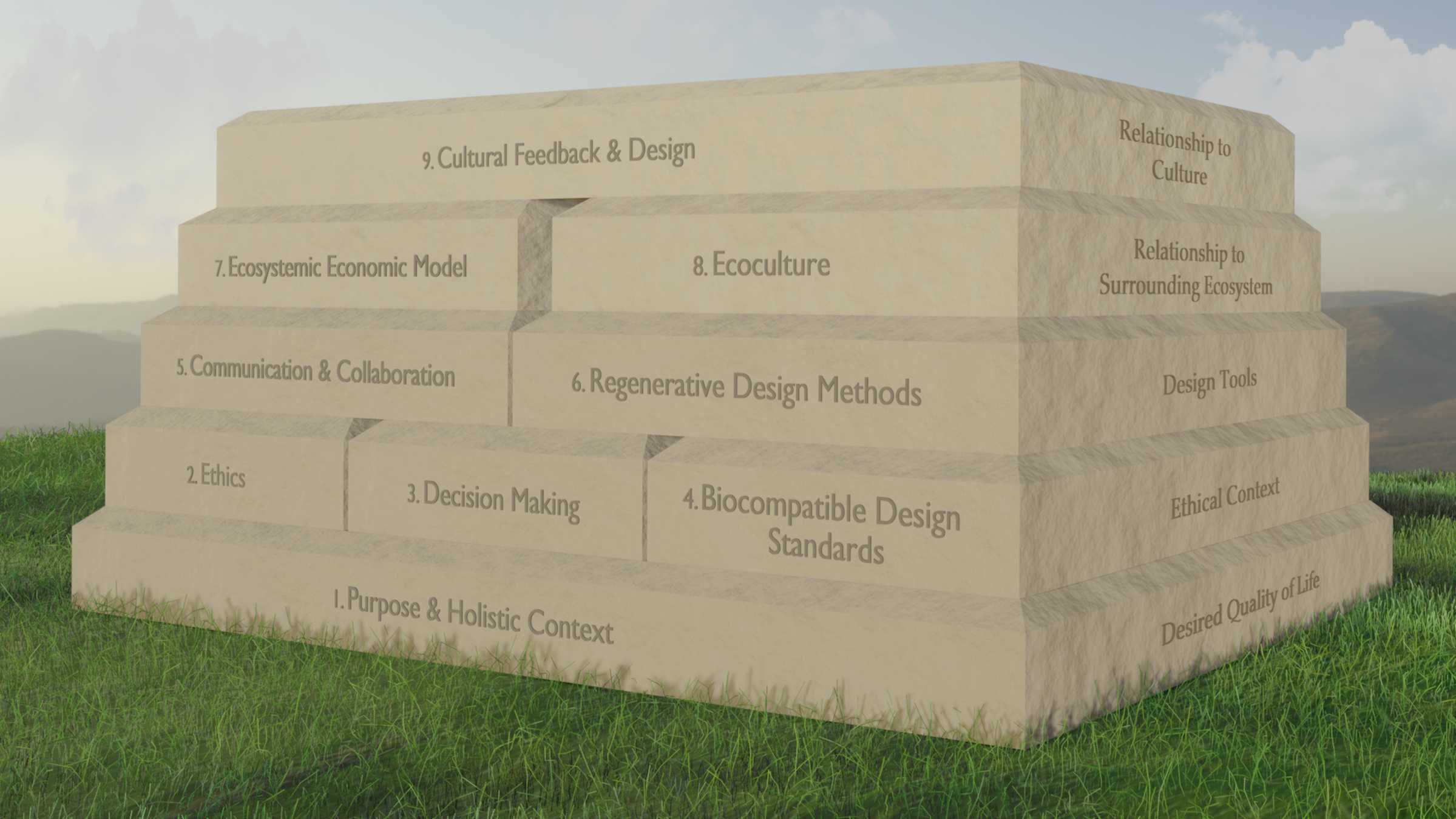
The design process used by IRD seeks to maintain an open and ongoing dialog between those designing a system and those affected by the results of their work, ensuring that the resulting technologies support the health and vitality of communities and cultures in which they exist. Learn more
Money-centered economic models have historically been blind to the value of living ecosystems, failing to account for the value of a forest until the trees are all cut and loaded on a truck to be hauled to a mill. In order to properly account for the value of a thriving biosphere, an economic model centered on ecosystem value is required. Learn more
Modern cultures have often promoted the idea that humans are somehow separate from nature, and that the only "natural" ecosystems are those in which we are uninvolved. This idea has resulted in people who are disconnected from the natural landscape and that therefore fail to value it. Systems of ecoculture, in which people embrace their role as a keystone species in their local biosphere and work to help regenerate it, are critical to restoring much of the biodiversity and richness to our landscapes. Learn more
In order for design professionals to work together effectively in transdisciplinary teams (the "I" in IRD), an effective set of communication and collaboration tools are needed to allow for an open flow of information that results in all contributors having a whole-systems view of the project. Learn more
The design approach required for working with regenerative ecological systems is very different than the approaches that have historically been used in creating degenerative, mechanistic systems. A different set of design tools, rooted in an understanding of ecosystems and embracing the complexity of natural systems, is required to produce outcomes that are sustainable and regenerative over time. Learn more
Every design has at it's heart a set of ethical decisions, whether they are acknowledged of not. Every design makes decisions about how limited resources will be used, who will benefit, and who might be harmed. Often these ethical decisions are implicit and mostly unexamined. The IRD Framework requires that design ethics be stated explicitly, and that all aspects of design, implementation, operation, and decommissioning be reviewed to assure they conform to the stated ethics. Learn more
Creating regenerative systems often requires considering and balancing a range of competing priorities and goals. A well-defined framework for making decisions is required to keep the development of large-scale designs on-track while ensuring that those making the decisions are able to maintain a whole-system view. Learn more
The Biocompatible Design Standards provide a set of design objectives and design guidelines based around a set of 21 core principles describing the attributes required for a design to be ecosystemic, biocompatible, and regenerative. Learn more
Every design begins with a clear statement of purpose along with a detailed assessment of the larger context in which it will exist. The holistic context identifies the scope of the project, the internal and external stakeholders, and the indicators of success that will be used to access the results. Learn more
Every design should start with a clear idea of why it should exist and what purpose it should serve. Core to this definition of purpose is identifying the quality of life that the design should help provide for those who design, implement, operate, use, and decommission it.
In order to create ethical designs, we need to start with a clear set of ethical guidelines, create a framework for making ethical decisions based on those guidelines, and work towards meeting a set of regenerative design standards that require a deep assessment of the impact and outcomes of the systems we build.
The way in which designers work together determines whether the results will be integrated at the whole-systems level. Designers that work in isolated bubbles based on specialty will create designs that are piece-wise smart but whole-system stupid. Designers that work together in transdisciplinary teams that use regenerative design tools can create systems whose creation and operation is mutually symbiotic with the surrounding ecosystems.
Human technology is embedded in the context of the Earth's biosphere, requiring both stewardship of natural capital and careful accounting for the way our technological products affect the flow of resources and capital.
Every piece of technology we produce has an series of impacts, both direct and indirect, on the cultures it touches. Careful consideration of the potential positive and negative outcomes of a design on the community who will use it is an integral part of the IRD Framework.
